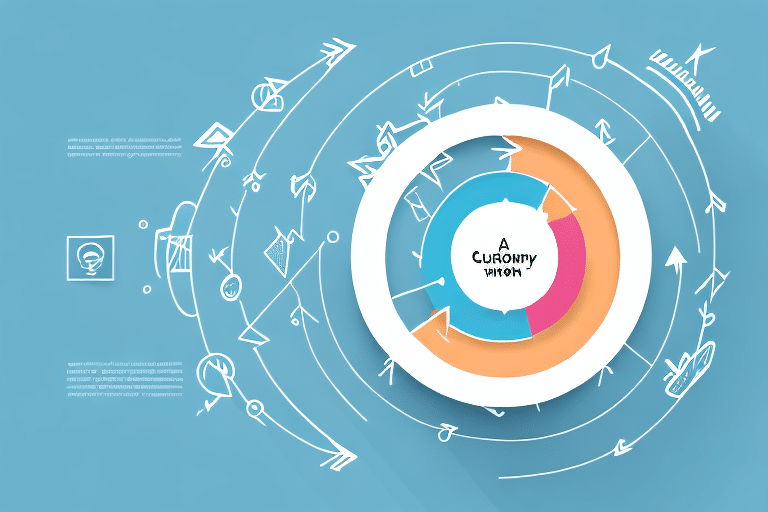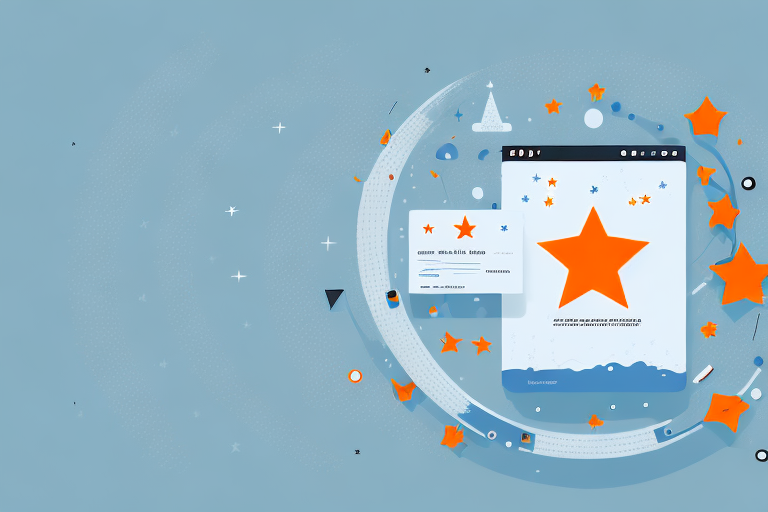How to Increase Your Sales and Maximize Profits
As a business owner, you understand that sales are a crucial component of your success. However, merely having a product or service to offer is not enough to ensure profitability. You need to develop an effective sales strategy that maximizes your profits and drives growth. In this article, we'll explore the steps you can take to increase your sales and maximize your profits, supported by recent data and industry insights.
Understanding Your Target Audience
The first step in developing an effective sales strategy is understanding your target audience. This involves identifying who your ideal customers are, the problems they aim to solve, and what motivates them to make a purchase.
According to a HubSpot report, businesses that prioritize audience understanding are 60% more likely to achieve their sales targets. By answering these questions, you can create detailed customer personas that will guide your sales efforts.
With well-defined personas, you can tailor your messaging and sales approach to speak directly to your target audience, increasing the likelihood of conversion.
It's important to note that understanding your target audience is an ongoing process. As your business grows and evolves, so too will your customers' needs and motivations. Regularly revisiting and updating your customer personas can help ensure that your sales strategy remains effective and relevant.
Defining Your Unique Selling Proposition
Your unique selling proposition (USP) is what sets your product or service apart from your competitors. It answers the questions: What makes you different? Why should customers choose you over someone else?
Defining your USP allows you to communicate your value proposition clearly to your target audience. This clarity can be a key factor in their decision-making process when deciding whether to make a purchase.
One effective method to define your USP is to conduct market research and analyze your competitors. This process can help you identify gaps in the market and areas where you can differentiate yourself. Additionally, surveying your existing customers can provide insights into what they value most about your product or service, allowing you to refine your USP accordingly.
According to a Forbes article, regularly reviewing and updating your USP as your business evolves and the market changes is crucial. Staying true to your unique selling proposition helps build a strong brand identity and attracts loyal customers who appreciate what sets you apart.
Developing an Effective Sales Strategy
With your target audience and USP in mind, it's time to develop an effective sales strategy. This strategy should include specific tactics for reaching your target audience, such as:
- Email marketing
- Social media advertising
- Attending networking events
- Content marketing
- Search engine optimization (SEO)
Additionally, refining your messaging and sales pitch is essential to ensure it resonates with your target audience. This may involve A/B testing different messages and sales approaches to determine what works best.
Another important aspect of developing an effective sales strategy is establishing clear goals and metrics for measuring success. Key performance indicators (KPIs) such as conversion rate, average transaction value, and sales growth can help you track your progress and make necessary adjustments to improve your sales performance.
Staying up-to-date with industry trends and changes in your target audience's needs and preferences is also vital. This ongoing vigilance allows you to adapt your sales strategy accordingly and maintain a competitive edge.
Creating a Sales Funnel That Works
A sales funnel is a step-by-step process that guides your target audience from initial awareness to making a purchase. By creating a well-defined sales funnel, you can effectively move potential customers through each stage, increasing the likelihood of conversion.
Your sales funnel should include various touchpoints, such as:
- Email marketing campaigns
- Sales calls
- Targeted advertising
- Content downloads
- Webinars and online events
Each touchpoint should be tailored to the specific stage of the funnel in which the customer finds themselves:
- Awareness: Potential customers are just learning about your brand. Your goal is to capture their attention and provide valuable information to encourage them to move to the next stage.
- Interest: Potential customers have shown interest and are seeking more information. Provide detailed insights about your products or services and address any questions they may have.
- Decision: Customers are evaluating their options. Offer compelling reasons to choose your product or service, such as testimonials, case studies, and special offers.
- Action: Encourage customers to make a purchase through clear calls-to-action and seamless checkout processes.
Implementing a robust sales funnel can significantly enhance your ability to convert leads into loyal customers.
Leveraging Social Media to Boost Sales
Social media platforms offer an excellent opportunity to reach your target audience. By creating engaging content and building a following on platforms like Facebook, LinkedIn, and Twitter, you can increase brand awareness, reach new customers, and drive sales.
According to Statista, over 4.2 billion people use social media worldwide, making it a powerful tool for marketing your products or services.
Additionally, social media platforms offer robust advertising capabilities, allowing you to target your ideal customers with precision. By investing in social media advertising, you can maximize your return on investment and drive sales with exceptional efficiency.
Beyond advertising, social media is a platform for building relationships with your customers. By engaging with your followers, responding to their comments and messages, and providing valuable information, you can establish trust and loyalty. This can lead to repeat business and positive word-of-mouth recommendations, further boosting your sales and brand reputation.
Implementing Effective Pricing Strategies
Pricing can be a make-or-break factor when it comes to sales success. Effective pricing strategies focus on finding the sweet spot between profitability and affordability for your target audience.
Consider the following pricing strategies:
- Testing different price points
- Bundling products or services together
- Creating tiered pricing options
- Offering subscription-based models
By developing a pricing strategy that resonates with your target audience and maximizes profitability, you can drive long-term sales success.
Understanding your competition is crucial in setting competitive prices. Conducting market research to determine what your competitors are charging for similar products or services can help you position your pricing effectively.
Additionally, analyzing your target audience's purchasing behavior and willingness to pay can inform your pricing decisions. Tools like Shopify's pricing strategy guide can provide valuable insights.
Another factor to consider is the perceived value of your product or service. If your target audience perceives your offering as high value, they may be willing to pay a premium price. Conversely, if perceived value is low, you may need to adjust your pricing strategy accordingly.
Maximizing Customer Lifetime Value
The customer lifetime value (CLV) is the total amount a customer will spend with your business over their lifetime. Maximizing CLV can significantly increase your overall profitability and drive long-term success.
To maximize CLV, focus on the following strategies:
- Providing exceptional customer service
- Creating customer loyalty programs
- Developing upsell and cross-sell opportunities
- Personalizing marketing efforts
- Continually innovating and improving your products or services
According to a study by Bain & Company, increasing customer retention rates by 5% can increase profits by 25% to 95%.
Personalizing your marketing efforts by tailoring messaging and offers to each individual customer's preferences and behaviors can significantly increase the likelihood of repeat purchases and higher spending.
Additionally, continually innovating and improving your products or services keeps customers engaged and coming back for more, ultimately increasing their lifetime value.
Focusing on Customer Retention for Long-Term Success
While acquiring new customers is important, retaining existing customers is equally crucial for long-term success. Repeat customers not only provide ongoing revenue streams but also serve as enthusiastic brand advocates, driving new sales through word-of-mouth referrals.
Focus on building long-term relationships with your customers by:
- Providing exceptional customer service
- Maintaining regular communication
- Offering personalized experiences
- Implementing customer feedback mechanisms
One effective way to retain customers is by offering loyalty programs that reward repeat business. These programs can include discounts, exclusive offers, and other incentives that encourage customers to continue doing business with your company.
Addressing any issues or concerns that customers may have is also vital. Promptly responding to customer complaints and resolving issues demonstrates your commitment to customer satisfaction and builds trust.
According to Invesp, improving customer retention by just 2% can boost profits by 10% to 15%.
Investing in Sales Training and Development
Effective sales strategies require knowledgeable and skilled sales staff. Investing in sales training and development can help your team become more effective at reaching your target audience, closing more sales, and maximizing profitability.
Consider providing ongoing training opportunities, such as:
- Workshops and seminars
- Conferences and industry events
- Online courses and certifications
- Mentorship programs
Additionally, investing in sales training and development can improve employee retention and job satisfaction. When employees feel that their employer is invested in their professional growth, they are more likely to feel valued and motivated to stay with the company long-term.
A report by Sales Hacker indicates that companies with comprehensive sales training programs see a 50% higher net sales per employee.
Utilizing Data Analytics to Optimize Sales Performance
Data analytics can provide valuable insights into your sales performance, allowing you to optimize your sales strategy for greater success. By tracking key metrics like conversion rate, customer acquisition cost, and customer lifetime value, you can gain a deeper understanding of what's working and what's not.
Use this data to:
- Test new sales approaches
- Refine your messaging
- Double down on strategies that are driving success
- Identify and address bottlenecks in the sales process
According to McKinsey, data-driven organizations are 23 times more likely to acquire customers, six times as likely to retain those customers, and 19 times as likely to be profitable as a result.
By leveraging data analytics, you can continuously improve your sales performance and drive long-term growth.
Building Strong Relationships with Key Customers
Key customers can be some of your most valuable assets when it comes to sales success. Building strong relationships with these customers can maximize their lifetime value and leverage their influence to drive new sales.
Invest in personalized experiences, targeted messaging, and exceptional customer service to nurture these relationships. This approach not only strengthens loyalty but also provides valuable insights and feedback that can inform your broader sales strategy.
Strategies to build strong relationships with key customers include:
- Regular check-ins and personalized communication
- Exclusive offers and early access to new products
- Soliciting and acting on customer feedback
- Hosting exclusive events or webinars
According to a Forbes article, strong relationships with key customers can lead to a 20-40% increase in marketing-referred sales.
Nurturing Partnerships with Other Businesses for Cross-Promotion
Partnering with other businesses in your industry can be an effective way to drive new sales and reach new customers. By cross-promoting each other's products or services, you can tap into new markets and build brand awareness.
When choosing partners, look for businesses with complementary offerings that appeal to your target audience. For example, a software company might partner with a hardware manufacturer to offer bundled solutions.
Nurture these partnerships through regular communication and collaboration to build a strong and mutually beneficial relationship. Joint ventures, co-hosted events, and shared marketing campaigns can amplify your reach and effectiveness.
A study by Business News Daily highlights that businesses engaging in strategic partnerships can see up to a 25% increase in revenue growth.
Creating Irresistible Offers and Promotions
Irresistible offers and promotions can be powerful tools for driving sales and building brand awareness. By offering discounts, promotions, or limited-time offers, you can incentivize potential customers to make a purchase.
However, it's crucial to balance promotions to avoid eroding your profitability over time. Instead of relying solely on discounts, focus on creating offers that provide genuine value to your target audience and align with your overall sales strategy.
Examples of effective offers include:
- Buy one, get one free deals
- Limited-time discounts
- Bundled product offers
- Exclusive access to new products or features
According to Shopify, well-crafted promotions can increase conversion rates by up to 20% when strategically implemented.
Additionally, leveraging scarcity and urgency in your promotions can further enhance their effectiveness. Phrases like "limited time only" or "while supplies last" can prompt quicker decision-making from potential customers.
Measuring and Tracking Sales Metrics for Continuous Improvement
Finally, it's crucial to measure and track your sales metrics for continuous improvement. This practice allows you to understand what's working, what's not, and make data-driven decisions to optimize your sales strategy over time.
Key metrics to track include:
- Conversion Rate: The percentage of leads that convert into paying customers.
- Customer Acquisition Cost (CAC): The cost associated with acquiring a new customer.
- Customer Lifetime Value (CLV): The total revenue expected from a customer over their relationship with your business.
- Average Transaction Value: The average amount spent by a customer per transaction.
Use this data to inform your sales approach by:
- Identifying high-performing sales tactics
- Eliminating or refining underperforming strategies
- Allocating resources more effectively
- Setting realistic and achievable sales goals
According to Gartner, organizations that regularly analyze sales data outperform their peers by 40% in revenue growth.
Continuously testing and refining your strategy ensures that you remain agile and can adapt to changing market conditions, ultimately helping you increase your sales and maximize your profits over the long term.









